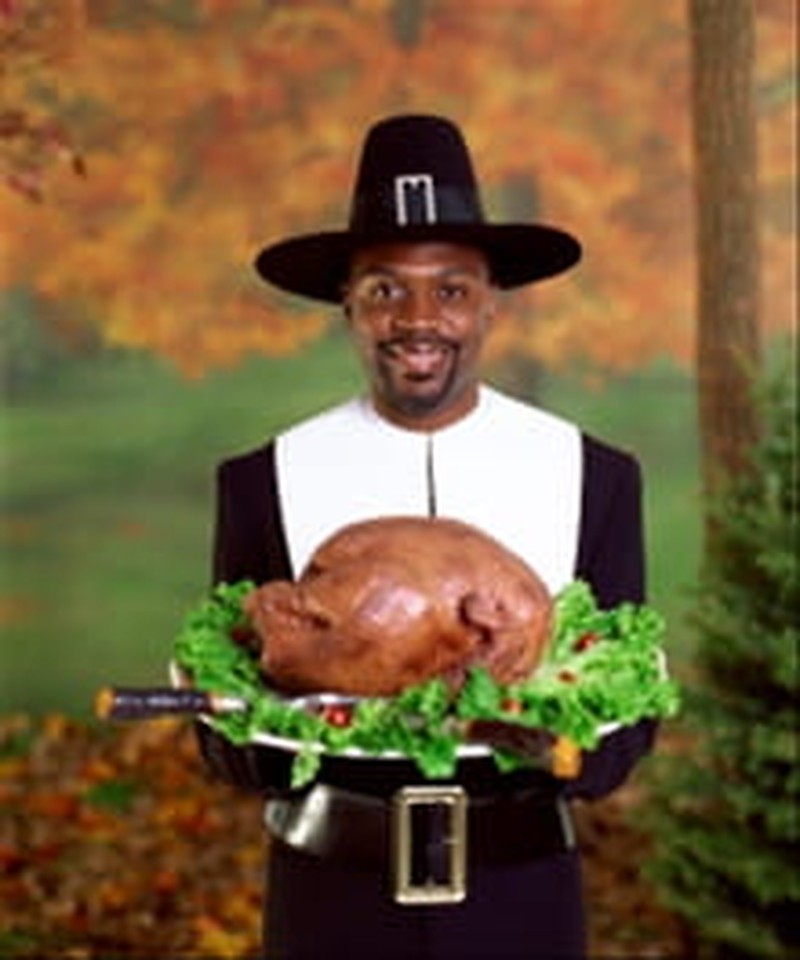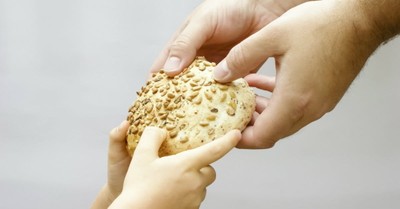Make the First Thanksgiving Real to Your Children
- Barbara Curtis Crosswalk.com Contributing Writer
- Updated Nov 04, 2011

I'd stuffed many a turkey before I really understood Thanksgiving. Oh, sure, I knew we were supposed to be thankful, and once I became a Christian I knew who we were thanking. But it wasn't until I taught my children at home that I really got the whole story.
Unfortunately, these days that story keeps getting harder to find.
For years, many public schools have left God out of Thanksgiving, teaching instead that the Pilgrims gave a party to thank the Native Americans or Mother Earth. Even more current are claims that the first Thanksgiving was a copy of European harvest festivals or a stolen Native American custom, or just a repeat of thanksgivings by other explorers.
But the Pilgrims' own writings and the historical events leading to the first Thanksgiving show the traditional accounts (available in pre-1960 books and encyclopedias) to be authentic. Thanksgiving was not as an isolated event, or an imitation, but a uniquely inspired Christian celebration -- the culmination of a long journey of faith in which the Pilgrims had relied on God and trusted him through many adversities.
If the story is not to be forgotten, it is today's Christian parents who must pass it on.
This year, make sure your celebration of Thanksgiving includes this portrait of God's hand in history bringing people together to accomplish specific purposes -- as well as the lesson of 1 Thessalonians 5:18:
Be joyful always, pray continually, and give thanks in all circumstances.
Tell It
In the early 1600s, the Wampanoag (Wam-pa-NO-ag) Indians covered the coast of what we now call New England. They raised crops, living close to the ocean in summer for seafood, moving inland in winter to set up hunting camps. Their encounters with Europeans over the years were mostly friendly.
One exception: In 1614 Captain Thomas Hunt captured several Wampanoag, along with a Patuxet named Squanto, to be sold into slavery in Spain. A Spanish monk purchased Squanto's freedom, taught him English, and introduced him to Jesus Christ. In 1619, Squanto returned to his native land, only to find his tribe wiped out by an epidemic. Thereafter he made his home with the Wampanoag.
Meanwhile, in 1608, a British group called the Separatists fled to Leyden, Holland. There they found religious freedom, but also poverty, grueling work hours and a secular culture that threatened to undo the values they had carefully instilled into their children. In 1620, they sold everything and indentured themselves for seven years to finance their journey to America.
On the Mayflower, the Separatists were joined by those seeking the new land for other reasons; these they called the Strangers. The two groups, 102 altogether, were called the Pilgrims.
Their journey lasted nine weeks. In one of those "accidents" which change the course of history, the ship lost its course and landed far north of its destination at what we now call Cape Cod, Massachusetts. Once outside the territory covered by the King's Charter, the Pilgrims became responsible for their own government, and so they wrote a set of laws called The Mayflower Compact.
On December 21, 1620, they began their new life at the place they named Plymouth.
It was a devastating winter -- whipped with wind and sleet and snow. Half the Pilgrims died. Still the Separatists clung to their faith; not one chose to return to England with the Mayflower that spring.
But spring brought unexpected relief w the help of a noble and generous Christian brother -- Squanto. He taught them how to grow corn, use fertilizer, stalk deer and catch fish. William Bradford, the governor of Plymouth, wrote of Squanto that he was "a special instrument sent of God for good beyond their expectations."
And so their first harvest was good. Governor Bradford proclaimed a day of thanksgiving to God and the Pilgrims invited their Indian friends. Chief Massasoit and 90 members of his tribe came, along with Squanto, bearing venison and wild turkeys for all to share. Together in harmony, the Pilgrims and the Indians feasted, played games, ran races and showed their prowess with bow and arrow and musket.
How thankful were the Pilgrims? The first Thanksgiving took three whole days!
Read It
Pass on the whole story -- so your children can tell their children:
Pilgrim Boy, Matilda Nordtvedt, A Beka Books, 114 pages, ages 7-12:
Life in Leyden, the Mayflower passage, first year hardships and the first Thanksgiving feast -- from the point of view of a young boy. Sparkling dialogue, expressive feelings make this a wonderfully readable, historically rich and faith-filled account.
Voyage to Freedom, David Gay, Banner of Truth Trust, 149 pages, ages 9-12:
An historical narrative of the Atlantic Crossing, through the eyes of one family. Their encounters with the actual historical figures provide a satisfying, adventuresome view of the Mayflower voyage, from their first steps aboard to their first steps on Plymouth.
Squanto and the Miracle of Thanksgiving, Eric Metaxas, Tommy Nelson, 32 pages, ages 4-8:
Among many wonderful books about Squanto, this one stands out, showing clearly that the primary player in the Thanksgiving story was not a Native American or Pilgrim, but God.
The Light and the Glory for Children, Peter Marshall and David Manuel, Revell, 174 pages, ages 9-12:
A simplified version of the adult original, this thoughtful text details God's plan for America revealed in its history from Christopher Columbus through George Washington. Questions at the end of each chapter for family discussion.
Sarah Morton's Day: A Day in the Life of a Pilgrim Girl;
Samuel Eaton's Day: A Day in the Life of a Pilgrim Boy;
Tapenum's Day: A Wampanoag Indian Boy in Pilgrim Times. Kate Waters, Scholastic Incorporated, 32 pages, ages 4-8:
Authentically designed photos follow each child through a typical day, with a first-person narrative describing daily activities, family life, as well as hopes and fears.
Three Young Pilgrims, Cheryl Harness, Alladin Paperbacks, 40 pages, ages 4-8:
Richly detailed, engaging illustrations of the Mayflower voyage, the first wedding at Plymouth, the Indians, the harvest. Language-rich, child-friendly format.
Hear It
The Legend of Squanto, Paul McCusker, Focus on the Family Radio Theater, 2 CDs or audiocassettes:
Focus says: "More than a story about an honest man who triumphed over tragedy. It is also a tribute to forgiveness, integrity and the ability to look beyond the color of a man's skin."
Sing It
Traditional Thanksgiving Hymns To Teach Your Family
- Come, Ye Thankful People, Come
- Now Thank We All Our God
- We Gather Together
- We Plow the Seeds and Scatter
Hear the tunes, find all the verses, and learn the origins of these and other hymns at Cyberhymnal.
See It In Your Own Lives
Five Kernels of Corn
The year following the first Thanksgiving brought greater hardship than the first. During the Starving Time, according to tradition, the Pilgrims had only a daily ration of five kernels of corn apiece. Still, they did not give in to bitterness, but trusted their Lord.
Many families now practice this tradition: Beside each place at the Thanksgiving table are five kernels of dried corn. During the meal, a special cup is passed to each member of the family. Each drops a kernel into the cup while sharing something for which he is grateful.
Our family loves this tradition, as even the youngest can participate!
Thanksgiving Every Day
The first Thanksgiving was a joyful celebration -- but so much more. For though the Pilgrims had much to be thankful for -- the shelters they had built, the successful harvest, their good relations with the Native Americans -- all were still grieving the loss of fathers, mothers, brothers, sisters.
So it's about more than giving thanks. It is about giving thanks in all circumstances. That's something uniquely Christian. What scriptures were the Pilgrims thinking of? Perhaps Nehemiah 8:10: This day is sacred to our Lord. Do not grieve, for the joy of the Lord is your strength.
The Pilgrims' lives -- their courage, perseverance, and joy -- show them to be not just hearers of the Word but doers as well. Remembering each Thanksgiving how they chose to celebrate God's goodness and continue to trust him with their own lives challenges us to do the same each day.
Barbara Curtis has 12 children -- including three adopted sons with Down syndrome -- and 10 grandchildren so far. She is also an award-winning author with nine books and 800+ articles in print publications including Focus on the Family, Guideposts, Christian Parenting Today and The Washington Times. Barbara is a popular speaker at MOPS and women's events, as well as writers' conferences. Online you can find her at MommyLife and Mommy, Teach Me!
Publication date: November 17, 2008
Visit Crosswalk's Thanksgiving Facebook page at www.facebook.com/iAmThankful.



















